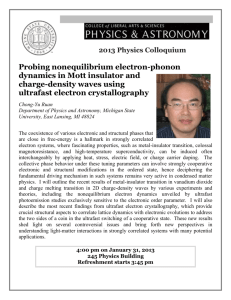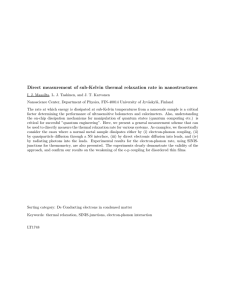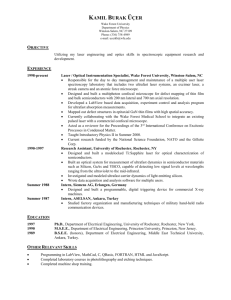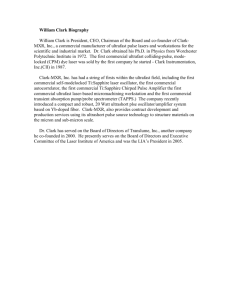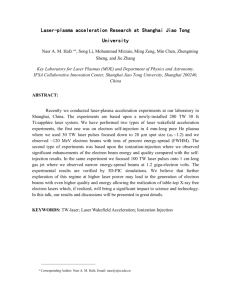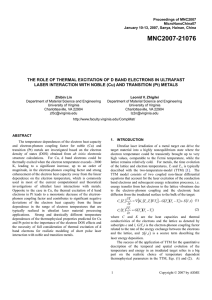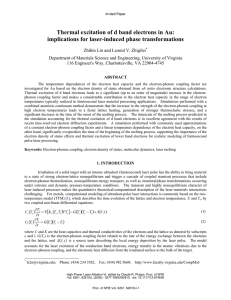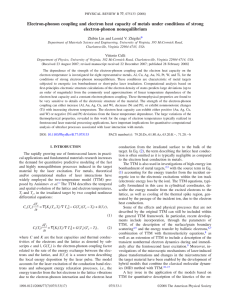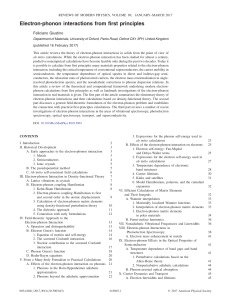Computational Investigation of Short Pulse Laser Interaction with Metals Zhibin Lin
advertisement
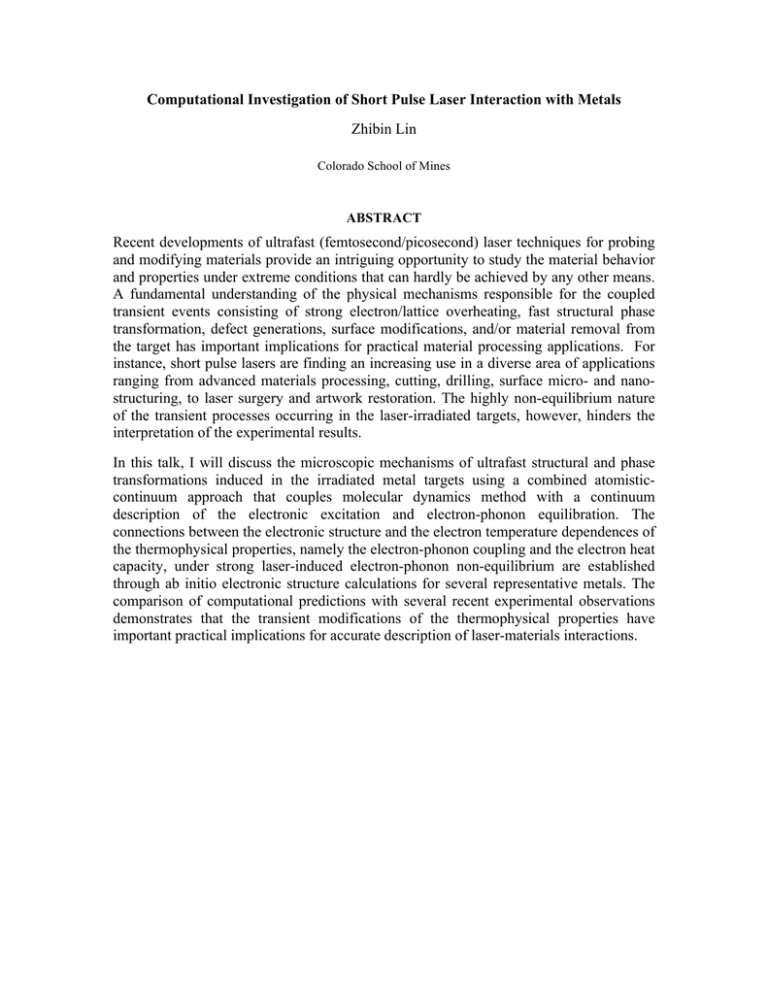
Computational Investigation of Short Pulse Laser Interaction with Metals Zhibin Lin Colorado School of Mines ABSTRACT Recent developments of ultrafast (femtosecond/picosecond) laser techniques for probing and modifying materials provide an intriguing opportunity to study the material behavior and properties under extreme conditions that can hardly be achieved by any other means. A fundamental understanding of the physical mechanisms responsible for the coupled transient events consisting of strong electron/lattice overheating, fast structural phase transformation, defect generations, surface modifications, and/or material removal from the target has important implications for practical material processing applications. For instance, short pulse lasers are finding an increasing use in a diverse area of applications ranging from advanced materials processing, cutting, drilling, surface micro- and nanostructuring, to laser surgery and artwork restoration. The highly non-equilibrium nature of the transient processes occurring in the laser-irradiated targets, however, hinders the interpretation of the experimental results. In this talk, I will discuss the microscopic mechanisms of ultrafast structural and phase transformations induced in the irradiated metal targets using a combined atomisticcontinuum approach that couples molecular dynamics method with a continuum description of the electronic excitation and electron-phonon equilibration. The connections between the electronic structure and the electron temperature dependences of the thermophysical properties, namely the electron-phonon coupling and the electron heat capacity, under strong laser-induced electron-phonon non-equilibrium are established through ab initio electronic structure calculations for several representative metals. The comparison of computational predictions with several recent experimental observations demonstrates that the transient modifications of the thermophysical properties have important practical implications for accurate description of laser-materials interactions.
